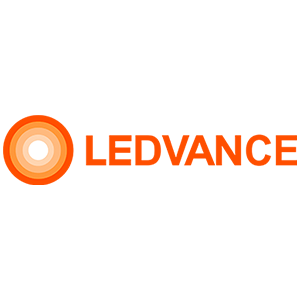
LED Bulbs
General aspects
LED bulbs are the perfect product for replacing low-energy or incandescent bulbs. Among the main advantages, we can indicate that LED bulbs are much more efficient than their predecessors, providing significant reductions in energy consumption. LED bulbs do not use harmful elements to the environment such as lead, mercury, cadmium, etc. Additionally, due to their long lifespan, they can provide end consumers with energy and cost savings of up to 80%, depending on the type of bulb used.
History of the light bulb
A light bulb is a device that converts electrical energy into light energy through various processes. The first light bulb dates back to the 19th century and was patented by Joseph Wilson Swam from the United Kingdom. However, the first commercially viable development was when Thomas Alva Edison used a carbon filament and made the bulb work for 48 hours on October 21, 1879. Since then, the evolution of lighting has been rapid, leading to LED bulbs through different technologies. These bulbs receive electrical energy from the power grid and convert it into light energy through intermediate electronic components (also called drivers).
Parts of a light bulb
Base: mechanism for fitting or attaching the bulb to its corresponding socket. This element is responsible for making the first contact with the supplied voltage from the power grid and transmitting it inside the bulb to convert it into light energy. There are many types of bases, with the most well-known being the E27.
Heat Sink: houses the driver. This element is usually made of ceramic or aluminum materials that are very good at dissipating heat. This aspect is crucial because if heat dissipation is not performed well, the product's lifespan may be affected.
Diffuser: is the part that will scatter light with greater or lesser angle of aperture depending on its morphology. The most well-known is the one shaped like a globe, although depending on the type of base, the diffuser may vary.
Selecting the ideal LED bulb to achieve effective energy savings
There are many types of LED bulbs, each with different purposes, bases, designs, and specifications. At GreenIce, we practically have all existing types of LED bulbs, from the most common ones, such as LED bulbs E27, to those for very specific uses, such as LED bulbs AR111.
Within the most commonly used types of LED bulbs, we can highlight:
- LED bulbs E27: They are the most used in the market. They are also called "large screw LED bulbs," in contrast to E14 bulbs, which have a small screw.
- LED bulbs GU10: This model replaces commonly known halogen bulbs. They work at 220Vac, so you only need to replace the old bulb with this one.
- LED bulbs E14: They are called "small screw LED bulbs." They are very commonly used in ceiling lamps.
In addition to the ones mentioned above, GreenIce also has all existing models, such as: LED bulbs MR16, LED bulbs G23/G24, LED bulbs R7S, LED bulbs G9, LED bulbs G4, LED bulbs AR111, LED bulbs PAR, LED bulbs G12, LED bulbs GX53, Vintage LED bulbs.
What do we need to know when buying LED bulbs?
Naturally, the first thing we need to consider when choosing an LED bulb is where it will be installed, and therefore, the type of bulb we need. At GreenIce, we recommend that once we have chosen the bulb model, we should focus mainly on these aspects.
LED bulb Power
Determines the consumption of the selected bulb. Contrary to what we might think, a higher power bulb does not always mean higher light output.
LED bulb Equivalence
Since we usually want to replace a traditional bulb with an LED bulb, and even though we should pay attention to their lumens, we need to know the equivalence between both technologies. All specifications of our GreenIce bulbs include this data.
Lumens-to-Watts Ratio
Watts are the luminous flux emitted by the light source. The relationship between lumens and watts tells us the amount of light emitted per unit of energy consumed.
Other important aspects when buying LED bulbs:
Estimated Lifespan
Indicates the number of hours the bulb can function throughout its lifespan.
Number of Switching Cycles
Represents the number of times a luminaire can be switched on and off before starting to fail.
Regarding the appearance of the bulb, and mainly its light, it is essential to consider the following aspects:
Color Temperature
Measured in degrees Kelvin. Despite variations in the gradation, we can say that LED bulbs can have light colors like Cool White, Natural White, or Warm White.
Color Rendering Index (CRI)
This index represents the ability of a light source to accurately reproduce object colors compared to an ideal light source or natural source, such as sunlight.
Beam Angle
Measured in degrees, it is the surface over which the light of the product will be reflected. It is essential to consider this data, as it will directly affect the uniformity of the light and also the number of luminaires to be used.
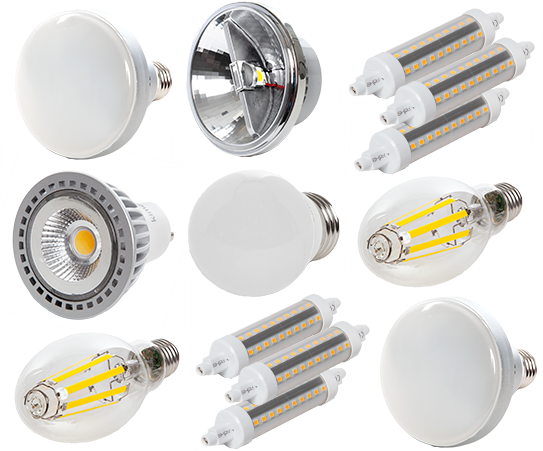
In this category
-
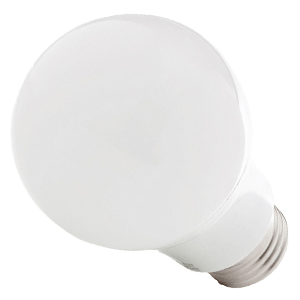
E27 LED Bulbs
The E27 LED Bulb is the most used bulb in all areas...
-
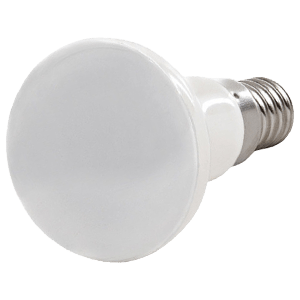
E14 LED Bulbs
The E14 Bulb (also called "small screw bulb") is one of the...
-

GU10 LED Bulbs
GU10 LED Spots are the replacements for the so-called halogen lamps. These...
-
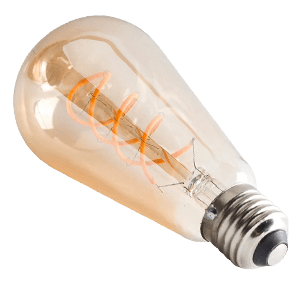
Vintage Light Bulbs
Vintage Bulbs recreate old tungsten filament bulbs. They are ideal for decorative...
-
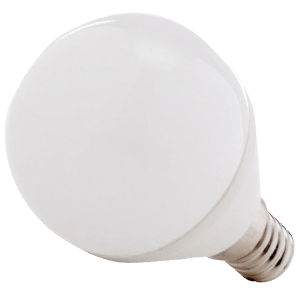
LED Bulbs "Super-Savings"
LED Bulbs "Super Savings" are a selection of the GreenIce LED bulbs...
-
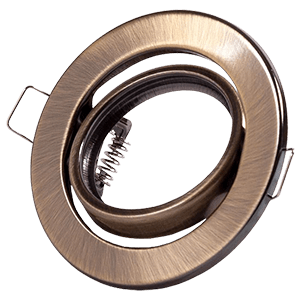
Recessed Fittings for LED Spots
This type of Recessed Fitting for LED Spots is used in places...
-
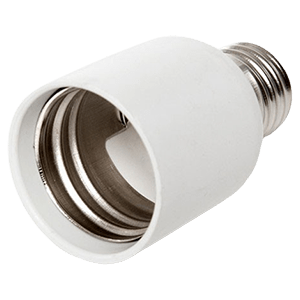
Lampholders and Accessories
At this category you can find everything from all of the lampholders...
-
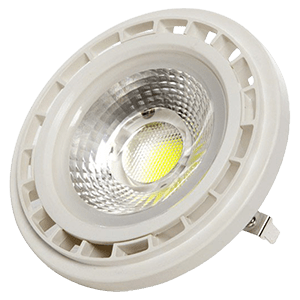
AR111 LED Bulbs
The AR111 LED Bulbs are the replacement of old halogen bulbs with...
-
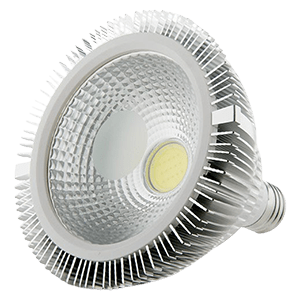
LED PAR Bulbs
LED PAR Bulbs are bulbs with E27 bushes with a particular morphology,...
-
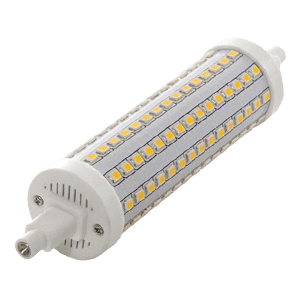
R7S LED Bulbs
R7S Led Bulbs, also known as linear halogen lamps, offer a great...
-
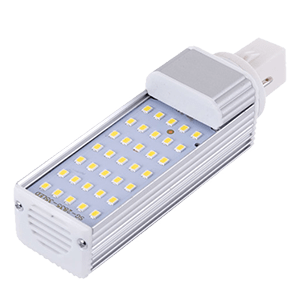
G24 LED Bulbs
G24 / G23 LED bulbs are the ideal substitutes for CFL lamps...
-
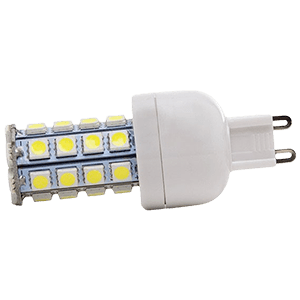
G9 LED Bulbs
The G9 bulbs are bi-pin type and work at 220VAC. Their small...
-
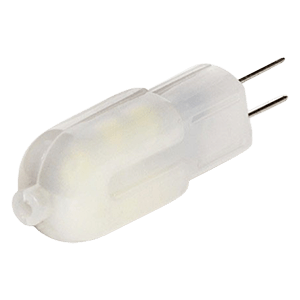
G4 LED Bulbs
The G4 LED Bulbs are bipin type and work at 12 VDC,...
-

G12 LED Bulbs
The G12 LED Bulbs are the most used in festive lighting and...
-
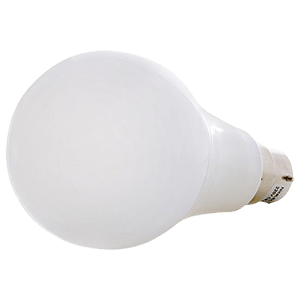
B22 & B15 LED Bulbs
B22 and B15 bulbs commonly referred to as "bayonet" operate at 220...
-
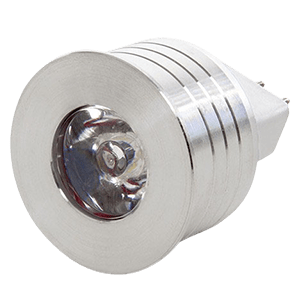
MR16/GU5,3 LED Spots
The MR16 (GU5, 3) and the MR11 (GU4) LED Spots are the...
-
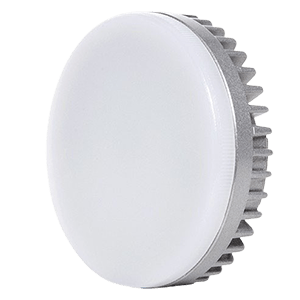
GX53 LED Bulbs
The GX53 LED Bulbs are the perfect replacement for halogen bulbs that...
-
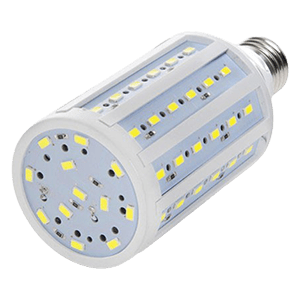
12VAC/DC Bulbs for Solar Installations
The main use of this type of light bulbs is intended for...
-
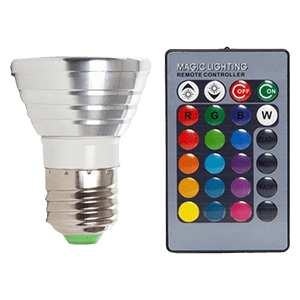
RGB LED Light Bulbs
The RGB LED bulbs and Spots are suitable for decorative and festive...
-

PHILIPS LED Bulbs
PHILIP LED Bulbs are a product of guarantee since they have a...
-
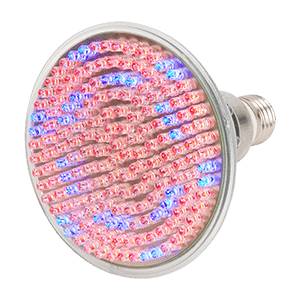
LED Grow and Aquarium Lamps
The LED Grow and Aquarium Lamps are used for places where the...
-
Supplier:GreenIce
E27 LED Bulb 5W 410Lm 6000ºK 40,000H [CV-G45-E27-5W-RC-CW]
Usual price 0,98€Usual priceUnit price / by- Warranty 3 years
- Power (W) : 5.0
- Luminous efficacy (LM/W) : 82
- Power factor (PF) : 0.9
-
-
Supplier:Luce Viva
LED Bulb E27 4W 288Lm 2000ºK Filament G45 40,000H [HO-LF-G45-E27-4W-WW]
Usual price 1,24€Usual priceUnit price / by- Warranty 3 years
- Power (W) : 4.0
- Luminous efficacy (LM/W) : 72
- Power factor (PF) : 0.5
-
Supplier:GreenIce
LED Bulb GU10 6W 700Lm 6000ºK 40.000H [HO-GU10-SMD-6W-IC-CW]
Usual price 1,02€Usual priceUnit price / by- Warranty 3 years
- Power (W) : 6.0
- Luminous efficacy (LM/W) : 116
- Power factor (PF) : 0.9
-
-
Supplier:GreenIce
LED Bulb E27 9W 1000Lm 6000ºK 40.000H [HO-ED-B3-E27-9W-CW]
Usual price 1,03€Usual priceUnit price / by- Warranty 3 years
- Power (W) : 9.0
- Luminous efficacy (LM/W) : 111
- Power factor (PF) : 0.9
-
-
Supplier:GreenIce
E14 LED Bulb 3W 240Lm 6000ºK 40,000H [HO-3WE14SMD2835-CW]
Usual price 0,93€Usual priceUnit price / by- Warranty 3 years
- Power (W) : 3.0
- Luminous efficacy (LM/W) : 80
- Power factor (PF) : 0.9
-
-
Supplier:Luce Viva
LED Bulb E14 4W 288Lm 2700ºK Filament 40,000H [JTX-J14DHB22-WW]
Usual price 1,00€Usual priceUnit price / by- Warranty 3 years
- Power (W) : 4.0
- Luminous efficacy (LM/W) : 72
- Power factor (PF) : 0.9
-
Supplier:GreenIce
Ring Downlight Round "Sara" Steel 81mm - Black
Usual price 1,53€Usual priceUnit price / by- Warranty 3 years
- Facility : IP20
-
Supplier:GreenIce
Lampholder Ceramic GU10 Cable 160Mm
Usual price 0,61€Usual priceUnit price / by- Warranty 3 years
-
Supplier:GreenIce
LED Bulb E14 5W 500Lm 6000ºK 40.000H [HO-C37-E14-5W-RC-CW]
Usual price 0,98€Usual priceUnit price / by- Warranty 3 years
- Power (W) : 5.0
- Luminous efficacy (LM/W) : 100
- Power factor (PF) : 0.9
-
-
Supplier:GreenIce
LED Bulb E27 10W 820Lm 6000ºK A60 LEDs 15,000H [HO-LM7035-CW]
Usual price 1,03€Usual priceUnit price / by- Warranty 3 years
- Power (W) : 10.0
- Luminous efficacy (LM/W) : 82
- Power factor (PF) : 0.9
-
-
Supplier:Luce Viva
LED Bulb E27 4W 273Lm 2000ºK Filament 40,000H [JTX-J27DH642-WW]
Usual price 1,02€Usual priceUnit price / by- Warranty 3 years
- Power (W) : 4.0
- Luminous efficacy (LM/W) : 68
- Power factor (PF) : 0.5
-
Supplier:GreenIce
Lampholder Ceramic GU5,3 Cable 160Mm
Usual price 0,27€Usual priceUnit price / by- Warranty 3 years
-
Supplier:GreenIce
LED Bulb E14 5W 500Lm 6000ºK 40.000H [HO-P45-E14-5W-RC-CW]
Usual price 0,99€Usual priceUnit price / by- Warranty 3 years
- Power (W) : 5.0
- Luminous efficacy (LM/W) : 100
- Power factor (PF) : 0.9
-
-
Supplier:Luce Viva
LED Bulb E27 6W 403Lm 2000ºK Filament 40,000H [JTX-J27DH662-WW]
Usual price 1,30€Usual priceUnit price / by- Warranty 3 years
- Power (W) : 6.0
- Luminous efficacy (LM/W) : 67
- Power factor (PF) : 0.5
-
Supplier:GreenIce
Ring Downlight Tiltable Square White 83/83Mm
Usual price 1,86€Usual priceUnit price / by- Warranty 3 years
- Facility : IP20
-
Supplier:GreenIce
LED Bulb E27 15W 1,250Lm 6000ºK A60 40,000H [HO-LM7048-CW]
Usual price 1,96€Usual priceUnit price / by- Warranty 3 years
- Power (W) : 15.0
- Luminous efficacy (LM/W) : 83
- Power factor (PF) : 0.9
-
-
Supplier:GreenIce
Pack 5 LED Bulbs GU10 6W 700Lm 4200ºK 40.000H [HO-GU10-SMD-6W-IC-W-PK5-AP]
Usual price 5,21€Usual priceUnit price / by- Warranty 3 years
- Power (W) : 6.0
- Luminous efficacy (LM/W) : 116
- Power factor (PF) : 0.9
-
Supplier:Luce Viva
LED Bulb E27 8W 547Lm 2000ºK Filament 40,000H [HO-J27DH68-WW]
Usual price 1,64€Usual priceUnit price / by- Warranty 3 years
- Power (W) : 8.0
- Luminous efficacy (LM/W) : 68
- Power factor (PF) : 0.5
-
Supplier:GreenIce
LED Bulb E27 15W 1,200Lm 6000ºK R90 40,000H [LLF-R90-E27-15W-CW]
Usual price 3,55€Usual priceUnit price / by- Warranty 3 years
- Power (W) : 15.0
- Luminous efficacy (LM/W) : 80
- Power factor (PF) : 0.9
-
Supplier:PHILIPS
Light Bulb LED Philips GU10 C90 Dimmable 2.6W 270Lm 2200-2700K [PH-929002065503]
Usual price 8,26€Usual priceUnit price / by- Warranty 5 years
- Power (W) : 2.6
- Luminous efficacy (LM/W) : 135
- Power factor (PF) : 0.55
-
-
Supplier:PHILIPS
Light Bulb LED Philips E27 R63 3W 255Lm 2700K [PH-929001891355]
Usual price 19,64€Usual priceUnit price / by- Warranty 5 years
- Power (W) : 3.0
- Luminous efficacy (LM/W) : 85
- Power factor (PF) : 0.55
-
-
Supplier:GreenIce
LED Bulb GU10 7W 750Lm 6000ºK 40.000H [HO-GU10-7W-CW]
Usual price 1,15€Usual priceUnit price / by- Warranty 3 years
- Power (W) : 7.0
- Luminous efficacy (LM/W) : 107
- Power factor (PF) : 0.9
-
-
Supplier:Luce Viva
LED Bulb E14 4W 288Lm 2000ºK Filament G45 40,000H [WO-LF-G45-E14-4W-WW]
Usual price 1,30€Usual priceUnit price / by- Warranty 3 years
- Power (W) : 4.0
- Luminous efficacy (LM/W) : 72
- Power factor (PF) : 0.5
-
Supplier:GreenIce
Ring Downlight Round "Sara" Steel 81mm - Chrome Plated
Usual price 1,82€Usual priceUnit price / by- Warranty 3 years
- Facility : IP20
-
Supplier:GreenIce
GU10 LED Bulb 5W 700Lm 6000ºK 50,000H [HO-NB-GU10-5W-CW]
Usual price 2,00€Usual priceUnit price / by- Warranty 3 years
- Power (W) : 5.0
- Luminous efficacy (LM/W) : 140
- Power factor (PF) : 0.95
-
-
Supplier:Luce Viva
LED Bulb E14 4W 144Lm 2000ºK Filament 40,000H [JTX-J14DHA22-WW]
Usual price 1,02€Usual priceUnit price / by- Warranty 3 years
- Power (W) : 2.0
- Luminous efficacy (LM/W) : 72
- Power factor (PF) : 0.5
-
Supplier:GreenIce
Pack of 10 LED Candle Lamps 2835SMD E14 5W 410Lm 40,000H
Usual price 9,94€Usual priceUnit price / by- Warranty 3 years
- Power factor (PF) : 0.9
- Number and type of LEDs : SMD2835
- CRI : 80
-
-
Supplier:GreenIce
Pack of 12 LED Lamps 2835SMD E27 5W 410Lm 40,000H
Usual price 11,84€Usual priceUnit price / by- Warranty 3 years
- Power factor (PF) : 0.9
- Number and type of LEDs : SMD2835
- CRI : 80
-
-
Supplier:PHILIPS
Pack 2 Light Bulb LED Philips E14 P45 4.3W 470Lm 2700K [PH-929001890467]
Usual price 14,50€Usual priceUnit price / by- Warranty 5 years
- Power (W) : 4.3
- Luminous efficacy (LM/W) : 117
- Power factor (PF) : 0.55
-
-
Supplier:PHILIPS
Light Bulb LED Philips E27 R80 4W 410Lm 2700K [PH-929001891503]
Usual price 22,22€Usual priceUnit price / by- Warranty 5 years
- Power (W) : 4.0
- Luminous efficacy (LM/W) : 102
- Power factor (PF) : 0.55
-
-
Supplier:Luce Viva
LED Bulb E14 4W 273Lm 2000ºK Filament 40,000H [JTX-J14DHA42-WW]
Usual price 1,15€Usual priceUnit price / by- Warranty 3 years
- Power (W) : 4.0
- Luminous efficacy (LM/W) : 68
- Power factor (PF) : 0.5
-
Supplier:GreenIce
Ring Downlight Round Tiltable "Vepa" Steel 90mm - White
Usual price 1,93€Usual priceUnit price / by- Warranty 3 years
- Facility : IP20
-
Supplier:GreenIce
Pack of 10 GU10 LED Bulbs 7W 520Lm 6000ºK 10 40,000H [SKY-GU10-7W-CW-PK10-AP]
Usual price 11,97€Usual priceUnit price / by- Warranty 3 years
- Power (W) : 7.0
- Luminous efficacy (LM/W) : 74
- Power factor (PF) : 0.9
-
-
Supplier:GreenIce
Ring Downlight Round "Sara" Steel 81mm - Satin
Usual price 1,96€Usual priceUnit price / by- Warranty 3 years
- Facility : IP20
-
Supplier:Luce Viva
LED Bulb E27 4W 273Lm 2000ºK Filament 40,000H [JTX-ST64DH42-WW]
Usual price 2,33€Usual priceUnit price / by- Warranty 3 years
- Power (W) : 4.0
- Luminous efficacy (LM/W) : 68
- Power factor (PF) : 0.5
-
Supplier:Ledvance-Osram
Ledvance/Osram "Classic" LED Bulb E27 3.4W 470Lm 4000K 300º IP20 Dimmable
Usual price 3,05€Usual priceUnit price / by- Warranty 3 years
- CRI : 90
- Dimable : Yes
- Facility : IP20
-
Supplier:Luce Viva
LED Bulb E27 2W 144Lm 2000ºK Filament T45 40,000H [HO-LF-T45-E27-2W-WW]
Usual price 2,90€Usual priceUnit price / by- Warranty 3 years
- Power (W) : 2.0
- Luminous efficacy (LM/W) : 72
- Power factor (PF) : 0.5
-
Supplier:GreenIce
Pack of 5 LED Bulbs E27 5W 450Lm 6000ºK 40,000H [HO-ED-B3-E27-5W-CW-PK5-AP]
Usual price 4,89€Usual priceUnit price / by- Warranty 3 years
- Power (W) : 5.0
- Luminous efficacy (LM/W) : 90
- Power factor (PF) : 0.9
-
-
Supplier:PHILIPS
Light Bulb LED Philips E14 R39 1.8W 190Lm 2700K [PH-929001890955]
Usual price 13,09€Usual priceUnit price / by- Warranty 5 years
- Power (W) : 1.8
- Luminous efficacy (LM/W) : 190
- Power factor (PF) : 0.55
-
-
Supplier:PHILIPS
Light Bulb LED Philips E27 G93 7W 806Lm 6500K [PH-929002371001]
Usual price 21,03€Usual priceUnit price / by- Warranty 5 years
- Power (W) : 7.0
- Luminous efficacy (LM/W) : 115
- Power factor (PF) : 0.55
-
-
Supplier:PHILIPS
Light Bulb LED Philips MR16 60D Dimmable 7W 621Lm 2700K [PH-929001904350]
Usual price 26,78€Usual priceUnit price / by- Warranty 5 years
- Power (W) : 7.0
- Luminous efficacy (LM/W) : 88
- Power factor (PF) : 0.55
-
-
Supplier:GreenIce
Lampholder E14 Black
Usual price 0,45€Usual priceUnit price / by- Warranty 3 years
-
Supplier:GreenIce
Ring Downlight Round "Sara" Steel 81mm - Latonado
Usual price 1,96€Usual priceUnit price / by- Warranty 3 years
- Facility : IP20
-
Supplier:GreenIce
GU10 LED Bulb 7W 580Lm 6000ºK Dimmable 40,000H [HO-LM7070-CW]
Usual price 1,75€Usual priceUnit price / by- Warranty 3 years
- Power (W) : 7.0
- Luminous efficacy (LM/W) : 82
- Power factor (PF) : 0.9
-
Supplier:Luce Viva
LED Bulb E27 4W 288Lm 2000ºK Filament T45 40,000H [HO-LF-T45-E27-4W-WW]
Usual price 2,95€Usual priceUnit price / by- Warranty 3 years
- Power (W) : 4.0
- Luminous efficacy (LM/W) : 72
- Power factor (PF) : 0.5
-
Supplier:GreenIce
Pack of 10 LED LAMPS 2835SMD E14 5W 410Lm 40,000H
Usual price 10,12€Usual priceUnit price / by- Warranty 3 years
- Power factor (PF) : 0.9
- Number and type of LEDs : SMD2835
- CRI : 80
-
-
Supplier:GreenIce
Pack of 10 Spherical LED Lamps Aluminum/PC E27 7W 630Lm 40,000H
Usual price 11,21€Usual priceUnit price / by- Warranty 3 years
- Power factor (PF) : 0.9
- Number and type of LEDs : SMD2835
- CRI : 80
-
-
Supplier:GreenIce
Lampholder E14 White
Usual price 0,45€Usual priceUnit price / by- Warranty 3 years
-
Supplier:GreenIce
GU10 LED Bulb 6W 580Lm 6000ºK Dimmable 40,000H [HO-LM7073-CW]
Usual price 1,74€Usual priceUnit price / by- Warranty 3 years
- Power (W) : 6.0
- Luminous efficacy (LM/W) : 96
- Power factor (PF) : 0.9
-
Supplier:PHILIPS
Light Bulb LED Philips MR16 36D 7W 621Lm 2700K [PH-929001904855]
Usual price 21,03€Usual priceUnit price / by- Warranty 5 years
- Power (W) : 7.0
- Luminous efficacy (LM/W) : 88
- Power factor (PF) : 0.55
-
Product comparator
LED Bulbs
General aspects
LED bulbs are the perfect product for replacing low-energy or incandescent bulbs. Among the main advantages, we can indicate that LED bulbs are much more efficient than their predecessors, providing significant reductions in energy consumption. LED bulbs do not use harmful elements to the environment such as lead, mercury, cadmium, etc. Additionally, due to their long lifespan, they can provide end consumers with energy and cost savings of up to 80%, depending on the type of bulb used.
History of the light bulb
A light bulb is a device that converts electrical energy into light energy through various processes. The first light bulb dates back to the 19th century and was patented by Joseph Wilson Swam from the United Kingdom. However, the first commercially viable development was when Thomas Alva Edison used a carbon filament and made the bulb work for 48 hours on October 21, 1879. Since then, the evolution of lighting has been rapid, leading to LED bulbs through different technologies. These bulbs receive electrical energy from the power grid and convert it into light energy through intermediate electronic components (also called drivers).
Parts of a light bulb
Base: mechanism for fitting or attaching the bulb to its corresponding socket. This element is responsible for making the first contact with the supplied voltage from the power grid and transmitting it inside the bulb to convert it into light energy. There are many types of bases, with the most well-known being the E27.
Heat Sink: houses the driver. This element is usually made of ceramic or aluminum materials that are very good at dissipating heat. This aspect is crucial because if heat dissipation is not performed well, the product's lifespan may be affected.
Diffuser: is the part that will scatter light with greater or lesser angle of aperture depending on its morphology. The most well-known is the one shaped like a globe, although depending on the type of base, the diffuser may vary.
Selecting the ideal LED bulb to achieve effective energy savings
There are many types of LED bulbs, each with different purposes, bases, designs, and specifications. At GreenIce, we practically have all existing types of LED bulbs, from the most common ones, such as LED bulbs E27, to those for very specific uses, such as LED bulbs AR111.
Within the most commonly used types of LED bulbs, we can highlight:
- LED bulbs E27: They are the most used in the market. They are also called "large screw LED bulbs," in contrast to E14 bulbs, which have a small screw.
- LED bulbs GU10: This model replaces commonly known halogen bulbs. They work at 220Vac, so you only need to replace the old bulb with this one.
- LED bulbs E14: They are called "small screw LED bulbs." They are very commonly used in ceiling lamps.
In addition to the ones mentioned above, GreenIce also has all existing models, such as: LED bulbs MR16, LED bulbs G23/G24, LED bulbs R7S, LED bulbs G9, LED bulbs G4, LED bulbs AR111, LED bulbs PAR, LED bulbs G12, LED bulbs GX53, Vintage LED bulbs.
What do we need to know when buying LED bulbs?
Naturally, the first thing we need to consider when choosing an LED bulb is where it will be installed, and therefore, the type of bulb we need. At GreenIce, we recommend that once we have chosen the bulb model, we should focus mainly on these aspects.
LED bulb Power
Determines the consumption of the selected bulb. Contrary to what we might think, a higher power bulb does not always mean higher light output.
LED bulb Equivalence
Since we usually want to replace a traditional bulb with an LED bulb, and even though we should pay attention to their lumens, we need to know the equivalence between both technologies. All specifications of our GreenIce bulbs include this data.
Lumens-to-Watts Ratio
Watts are the luminous flux emitted by the light source. The relationship between lumens and watts tells us the amount of light emitted per unit of energy consumed.
Other important aspects when buying LED bulbs:
Estimated Lifespan
Indicates the number of hours the bulb can function throughout its lifespan.
Number of Switching Cycles
Represents the number of times a luminaire can be switched on and off before starting to fail.
Regarding the appearance of the bulb, and mainly its light, it is essential to consider the following aspects:
Color Temperature
Measured in degrees Kelvin. Despite variations in the gradation, we can say that LED bulbs can have light colors like Cool White, Natural White, or Warm White.
Color Rendering Index (CRI)
This index represents the ability of a light source to accurately reproduce object colors compared to an ideal light source or natural source, such as sunlight.
Beam Angle
Measured in degrees, it is the surface over which the light of the product will be reflected. It is essential to consider this data, as it will directly affect the uniformity of the light and also the number of luminaires to be used.
Subscribe and get discounts and promotions
Subscribe to the Newsletter at the time of purchase and get a 5% discount on your order.
- When selecting an option, the entire page is updated.
- It opens in a new window.




















